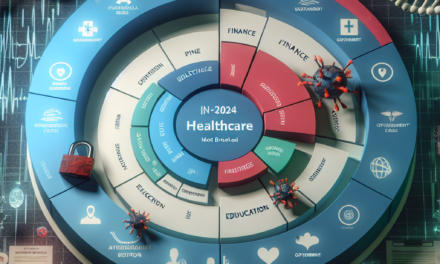General Catalyst’s HATCo to Purchase Summa Health for $485 Million

The healthcare industry is witnessing a significant transformation with the announcement of General Catalyst’s HATCo acquiring Summa Health for $485 million. This acquisition marks a pivotal moment in the healthcare sector, reflecting broader trends of consolidation and innovation. In this article, we delve into the details of this acquisition, exploring its implications for the healthcare landscape, the strategic motivations behind the deal, and the potential benefits and challenges it presents.
Background of General Catalyst and HATCo
General Catalyst is a prominent venture capital firm known for its investments in technology and healthcare startups. With a focus on fostering innovation, General Catalyst has been instrumental in supporting companies that aim to disrupt traditional industries. HATCo, a subsidiary of General Catalyst, specializes in healthcare investments, leveraging its expertise to drive growth and transformation in the sector.
Founded in 2000, General Catalyst has a track record of successful investments in companies like Airbnb, Stripe, and Warby Parker. The firm’s strategic approach involves identifying emerging trends and investing in companies that have the potential to redefine industries. HATCo, as a dedicated healthcare investment arm, aligns with General Catalyst’s mission by focusing on opportunities within the healthcare ecosystem.
HATCo’s investment strategy is centered around three key pillars: innovation, scalability, and impact. By investing in companies that demonstrate these qualities, HATCo aims to create value not only for its portfolio companies but also for the broader healthcare industry. The acquisition of Summa Health is a testament to HATCo’s commitment to driving meaningful change in healthcare delivery.
General Catalyst’s Investment Philosophy
General Catalyst’s investment philosophy is rooted in the belief that technology can be a powerful catalyst for change. The firm seeks to partner with entrepreneurs who are passionate about solving complex problems and are committed to building sustainable businesses. This philosophy is evident in General Catalyst’s diverse portfolio, which spans various sectors, including healthcare, technology, and consumer goods.
In the healthcare sector, General Catalyst has been particularly active, investing in companies that are leveraging technology to improve patient outcomes, enhance operational efficiency, and reduce costs. The firm’s investments in companies like Livongo, a digital health platform for chronic disease management, and Oscar Health, a technology-driven health insurance company, highlight its commitment to transforming healthcare through innovation.
HATCo’s Role in Healthcare Transformation
HATCo plays a crucial role in General Catalyst’s healthcare strategy by identifying and investing in companies that have the potential to drive significant change in the industry. With a focus on early-stage and growth-stage investments, HATCo seeks to support companies that are developing innovative solutions to address pressing healthcare challenges.
One of HATCo’s key areas of focus is digital health, where it invests in companies that are leveraging technology to improve patient care and streamline healthcare delivery. By supporting startups that are developing telemedicine platforms, remote monitoring solutions, and AI-driven diagnostic tools, HATCo is helping to shape the future of healthcare.
Summa Health: A Brief Overview
Summa Health is a leading healthcare system based in Akron, Ohio, with a rich history of providing high-quality care to the community. The organization operates a network of hospitals, outpatient facilities, and physician practices, offering a comprehensive range of services to meet the diverse needs of its patients.
Founded in 1989, Summa Health has grown to become one of the largest integrated healthcare delivery systems in Ohio. The organization is known for its commitment to patient-centered care, innovation, and community engagement. Summa Health’s focus on quality and safety has earned it numerous accolades, including recognition as one of the nation’s top healthcare systems.
The Strategic Rationale Behind the Acquisition
The acquisition of Summa Health by General Catalyst’s HATCo is driven by several strategic considerations. First and foremost, the deal aligns with HATCo’s mission to invest in organizations that are poised to drive meaningful change in healthcare delivery. By acquiring Summa Health, HATCo gains access to a well-established healthcare system with a strong reputation for quality care.
Additionally, the acquisition provides HATCo with an opportunity to leverage Summa Health’s existing infrastructure and resources to accelerate the development and deployment of innovative healthcare solutions. By integrating Summa Health’s capabilities with HATCo’s expertise in digital health and technology, the combined entity can create a more efficient and effective healthcare delivery model.
Implications for the Healthcare Landscape
The acquisition of Summa Health by General Catalyst’s HATCo has far-reaching implications for the healthcare landscape. As the industry continues to evolve, this deal highlights several key trends and challenges that are shaping the future of healthcare.
Consolidation in the Healthcare Sector
One of the most significant trends in the healthcare industry is consolidation. As healthcare organizations face increasing pressure to reduce costs and improve patient outcomes, many are turning to mergers and acquisitions as a strategy to achieve these goals. The acquisition of Summa Health by HATCo is a prime example of this trend, as it allows both organizations to leverage their combined resources and expertise to drive efficiencies and enhance care delivery.
Consolidation can lead to several benefits, including:
- Increased bargaining power with suppliers and payers
- Improved access to capital for investment in new technologies and infrastructure
- Enhanced ability to attract and retain top talent
- Greater scale and scope of services offered to patients
However, consolidation also presents challenges, such as potential disruptions to existing operations and concerns about reduced competition in the market. As the healthcare industry continues to consolidate, organizations must carefully navigate these challenges to ensure that they can deliver on their promises of improved care and efficiency.
The Role of Technology in Healthcare Transformation
Technology is playing an increasingly important role in transforming healthcare delivery. From telemedicine and remote monitoring to AI-driven diagnostics and personalized medicine, technology is enabling healthcare organizations to deliver more efficient, effective, and patient-centered care.
The acquisition of Summa Health by HATCo underscores the importance of technology in healthcare transformation. By integrating Summa Health’s capabilities with HATCo’s expertise in digital health, the combined entity can leverage technology to enhance care delivery and improve patient outcomes.
Some of the key areas where technology is driving change in healthcare include:
- Telemedicine: Expanding access to care by enabling remote consultations and follow-ups
- Remote Monitoring: Allowing for continuous monitoring of patients’ health status outside of traditional healthcare settings
- AI-Driven Diagnostics: Enhancing the accuracy and speed of diagnosis through advanced algorithms and machine learning
- Personalized Medicine: Tailoring treatments to individual patients based on their genetic makeup and other factors
As technology continues to evolve, healthcare organizations must stay at the forefront of innovation to remain competitive and deliver the best possible care to their patients.
Challenges and Opportunities in Healthcare Integration
Integrating two healthcare organizations can be a complex and challenging process. The acquisition of Summa Health by HATCo presents both challenges and opportunities for the combined entity as it seeks to create a more efficient and effective healthcare delivery model.
Some of the key challenges associated with healthcare integration include:
- Aligning organizational cultures and values
- Integrating disparate IT systems and data sources
- Ensuring continuity of care for patients during the transition
- Managing regulatory and compliance requirements
Despite these challenges, the integration of Summa Health and HATCo also presents significant opportunities. By combining their resources and expertise, the two organizations can create a more comprehensive and coordinated approach to care delivery. This can lead to improved patient outcomes, enhanced operational efficiency, and greater value for patients and stakeholders.
The Impact on Patients and Communities
The acquisition of Summa Health by HATCo has the potential to significantly impact patients and communities in the region. By leveraging their combined resources and expertise, the two organizations can enhance the quality and accessibility of care for patients.
Some of the potential benefits for patients and communities include:
- Improved access to a broader range of services and specialties
- Enhanced care coordination and continuity across the healthcare continuum
- Greater focus on preventive care and population health management
- Increased investment in community health initiatives and programs
As the combined entity works to integrate its operations and deliver on its promises of improved care, it will be essential to engage with patients and communities to ensure that their needs and priorities are addressed.
Strategic Motivations Behind the Deal
The acquisition of Summa Health by General Catalyst’s HATCo is driven by several strategic motivations that align with the broader goals of both organizations. Understanding these motivations provides valuable insights into the rationale behind the deal and its potential impact on the healthcare landscape.
Expanding Market Presence and Reach
One of the primary motivations behind the acquisition is the opportunity to expand market presence and reach. By acquiring Summa Health, HATCo gains access to a well-established healthcare system with a strong presence in Ohio. This allows HATCo to extend its footprint in the region and tap into new patient populations.
Expanding market presence can lead to several benefits, including:
- Increased patient volume and revenue potential
- Enhanced ability to attract and retain top talent
- Greater influence and bargaining power with suppliers and payers
- Opportunities for cross-selling and upselling services to existing patients
By leveraging Summa Health’s existing infrastructure and resources, HATCo can accelerate its growth and establish a stronger foothold in the competitive healthcare market.
Leveraging Synergies and Operational Efficiencies
The acquisition of Summa Health presents an opportunity for HATCo to leverage synergies and achieve operational efficiencies. By integrating the two organizations’ operations, HATCo can streamline processes, reduce redundancies, and optimize resource allocation.
Some of the key areas where synergies and efficiencies can be realized include:
- Shared services and administrative functions
- Consolidation of supply chain and procurement activities
- Integration of IT systems and data analytics capabilities
- Standardization of clinical protocols and best practices
By capitalizing on these synergies, HATCo can enhance its operational efficiency and deliver greater value to patients and stakeholders.
Driving Innovation and Digital Transformation
Innovation and digital transformation are central to HATCo’s strategic vision. The acquisition of Summa Health provides an opportunity to accelerate the development and deployment of innovative healthcare solutions that leverage technology to improve patient care and outcomes.
By integrating Summa Health’s capabilities with HATCo’s expertise in digital health, the combined entity can drive innovation in several key areas, including:
- Telemedicine and virtual care delivery
- Remote monitoring and chronic disease management
- AI-driven diagnostics and personalized medicine
- Data analytics and population health management
Through these initiatives, HATCo aims to create a more efficient, effective, and patient-centered healthcare delivery model that meets the evolving needs of patients and communities.
Enhancing Patient Experience and Outcomes
Improving patient experience and outcomes is a core focus of the acquisition. By combining their resources and expertise, HATCo and Summa Health can enhance the quality and accessibility of care for patients.
Some of the key strategies for enhancing patient experience and outcomes include:
- Implementing patient-centered care models that prioritize individual needs and preferences
- Enhancing care coordination and continuity across the healthcare continuum
- Expanding access to a broader range of services and specialties
- Investing in preventive care and population health management initiatives
By focusing on these strategies, HATCo aims to deliver a superior patient experience and achieve better health outcomes for the communities it serves.
Potential Benefits and Challenges
The acquisition of Summa Health by General Catalyst’s HATCo presents both potential benefits and challenges for the combined entity. Understanding these factors is crucial for assessing the overall impact of the deal on the healthcare landscape.
Potential Benefits of the Acquisition
The acquisition offers several potential benefits for HATCo, Summa Health, and the broader healthcare ecosystem. These benefits include:
- Enhanced Market Position: By acquiring Summa Health, HATCo strengthens its market position and expands its reach in the competitive healthcare landscape.
- Operational Efficiencies: The integration of operations allows for streamlined processes, reduced redundancies, and optimized resource allocation, leading to cost savings and improved efficiency.
- Innovation and Digital Transformation: The combined entity can leverage technology to drive innovation in healthcare delivery, improving patient care and outcomes.
- Improved Patient Experience: By focusing on patient-centered care models and enhanced care coordination, HATCo aims to deliver a superior patient experience.
- Access to Capital: The acquisition provides access to additional capital for investment in new technologies, infrastructure, and community health initiatives.
These benefits position HATCo and Summa Health for long-term success in the evolving healthcare landscape.
Challenges Associated with the Acquisition
While the acquisition presents significant opportunities, it also poses several challenges that must be addressed to ensure a successful integration. These challenges include:
- Cultural Alignment: Aligning the organizational cultures and values of HATCo and Summa Health is essential for a smooth integration process.
- IT Integration: Integrating disparate IT systems and data sources can be complex and time-consuming, requiring careful planning and execution.
- Regulatory Compliance: Navigating regulatory and compliance requirements is critical to avoid potential legal and financial risks.
- Continuity of Care: Ensuring continuity of care for patients during the transition is essential to maintain trust and confidence in the healthcare system.
- Stakeholder Engagement: Engaging with patients, employees, and other stakeholders is crucial to address their concerns and priorities.
By proactively addressing these challenges, HATCo and Summa Health can maximize the benefits of the acquisition and achieve their strategic goals.
Conclusion
The acquisition of Summa Health by General Catalyst’s HATCo represents a significant development in the healthcare industry, reflecting broader trends of consolidation and innovation. By combining their resources and expertise, HATCo and Summa Health have the potential to drive meaningful change in healthcare delivery, improving patient care and outcomes.
As the healthcare landscape continues to evolve, organizations must navigate the challenges and opportunities presented by mergers and acquisitions. By focusing on strategic alignment, operational efficiency, and patient-centered care, HATCo and Summa Health can position themselves for long-term success in the competitive healthcare market.
Ultimately, the success of the acquisition will depend on the ability of both organizations to integrate their operations, leverage synergies, and deliver on their promises of improved care and efficiency. By doing so, they can create a more efficient, effective, and patient-centered healthcare delivery model that meets the evolving needs of patients and communities.




